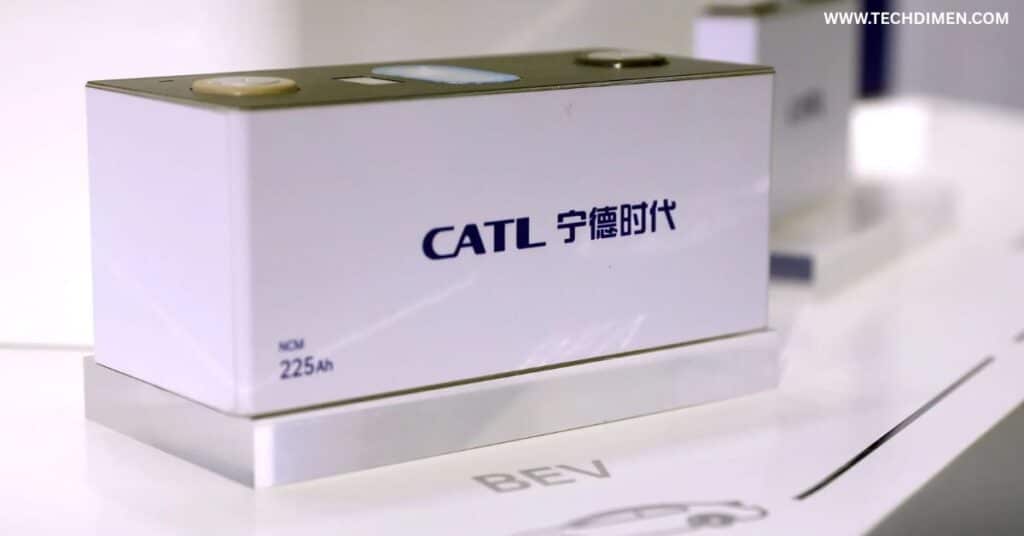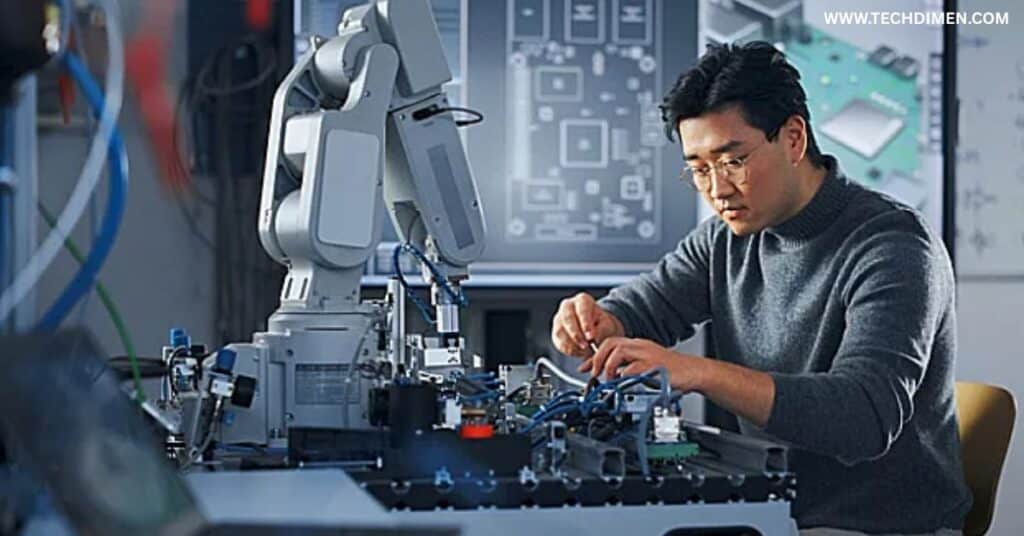Sector is undergoing a seismic transformation, fueled by rising geopolitical dynamics, shifting supply chains, and aggressive private equity plays. At the heart of this fast moving environment stands ftasiastock technology news a critical lens through which investors, analysts, and market watchers view the evolving tech and stock landscapes across Asia.
TSMC’s Strategic Bet: $100 Billion to Secure Chip Sovereignty
Taiwan Semiconductor Manufacturing Company, the world’s largest contract chipmaker, is making waves with a bold $100 billion U.S. investment plan through 2025. This massive capital injection aims to realign global semiconductor production, reducing dependence on cross-border logistics and insulating against growing regulatory risks. CEO C.C. Wei stated that artificial intelligence infrastructure, including AI chipsets for cloud data centers and smart devices, is driving new revenue highs.
This investment is also part of a larger effort to meet surging global demand for high performance chips. With Western nations seeking to bolster domestic chip capabilities, TSMC’s U.S. expansion will play a pivotal role in the geopolitical chessboard of tech dominance.
From an Asia stock market trends perspective, TSMC’s move has bolstered investor confidence. Asian tech stocks tied to chip manufacturing have seen increased volumes and valuations, particularly those supplying foundry services, equipment manufacturing, and semiconductor materials.
Spectris Acquisition: A Private Equity Power Play

Private equity has intensified its focus on undervalued, innovation rich firms in Asia’s hardware tech ecosystem. Advent International’s recent acquisition of Spectris, a UK listed maker of precision instrumentation, for £4.4 billion stands as a bellwether transaction. The deal, which marked an 85 percent premium over Spectris’s market cap, underscores how private capital views instrumentation technology as a future proofed investment aligned with pharma and semiconductor growth.
This acquisition sets a precedent for similar deals across Asia. FT AsiaStock data shows increased private equity interest in Japan’s robotics manufacturers, South Korea’s industrial IoT players, and Taiwan’s smart factory firms. These companies, while niche, offer robust recurring revenue models and global customer bases, making them attractive amid public market volatility.
Citi’s Strategic Tech Retrenchment in China
Citigroup recently slashed 3,500 technology jobs across its Shanghai and Dalian hubs as part of a broader operational restructuring. While the bank has retained core banking functions in Guangzhou, the cuts reflect a pivot in Citi’s global technology footprint. FT AsiaStock and regional observers view this as emblematic of how global banks are reevaluating their digital infrastructure investment strategies amid macroeconomic caution.
With the Chinese tech labor market cooling, displaced IT professionals are increasingly migrating to fintech firms or AI startups. Job reallocation has led to a modest rise in startup formation, particularly among former enterprise cloud engineers.
This wave of exits coincides with regulatory uncertainty and rising wages in Tier 1 cities, further complicating cost structures for foreign banks operating in the region. It also presents a cautionary tale about over-concentration of tech operations in a single country.
CATL’s IPO Ignites Asia’s EV Battery Boom

Contemporary Amperex Technology Co. Limited, better known as CATL, made headlines with its blockbuster Hong Kong IPO. Shares surged by 16 percent on the first day of trading, fueled by bullish sentiment around green energy tech in Asia. CATL, the world’s largest EV battery manufacturer, has become a symbol of China’s dominance in energy storage technology.
Investors saw the IPO as a green light for broader energy tech plays. With demand rising for electric mobility and clean power storage, battery manufacturers in Asia from Japan’s Panasonic to South Korea’s LG Energy Solution have ramped up R&D and factory output.
FT AsiaStock highlights that CATL’s performance has reshaped investor expectations, placing energy storage firms in the same growth tier as traditional software and semiconductor companies. Asia’s capital markets are now looking closely at next gen battery chemistries, especially those suited for grid level deployments and aerospace applications.
Asia-Pacific Startups Show Unmatched Resilience

Despite global headwinds like trade friction and inflationary pressure, Asia Pacific startups are flourishing. India’s fintech startup Lendbox is a prime example. Topping the FT Statista growth list, Lendbox recorded a compound annual growth rate of 536 percent between 2020 and 2023. This growth mirrors a broader pattern across ASEAN economies, where startup ecosystems are benefiting from digital adoption, mobile first consumers, and robust local venture capital.FT AsiaStock data shows strong traction in sectors such as digital lending, B2B SaaS, and e commerce. Startups in Indonesia, Vietnam, and the Philippines have achieved record funding rounds, even as Western capital markets pull back.
This resilience stems from three factors. First, Asia’s large unbanked populations make fintech innovation essential. Second, mobile internet penetration is rapidly expanding. Third, local entrepreneurs have built scalable business models adapted to cultural and regulatory nuances.
The Broader Picture: Themes Reshaping Asia Tech

Private equity is aggressively targeting undervalued tech companies across Asia. Firms are shifting away from consumer centric startups toward industrial automation, precision instrumentation, and AI enabled manufacturing platforms. The Spectris acquisition represents a growing appetite for hardware-backed, asset heavy businesses with defensible intellectual property.In tandem, job cuts like those seen at Citi reflect a changing tech employment landscape. Companies are adopting a more cautious, cost sensitive approach to scaling IT teams. Centralized hubs are giving way to distributed talent networks across Southeast Asia.Semiconductor industry Asia narratives are increasingly focused on supply chain realignment. With the U.S. imposing export controls and increasing chip subsidies, companies like Huawei have accelerated domestic investments. This is redefining where chips are designed, fabricated, and packaged, leading to a new tech geography in the region.
On the energy front, the success of CATL’s IPO reveals a hunger for green tech plays. Investors are eyeing energy transition technologies not as fringe bets but as core growth vectors. This includes advanced batteries, hydrogen cells, and thermal storage units.
Meanwhile, Asia Pacific startups growth continues to redefine what scalability means in emerging markets. These companies combine lean operations with viral user acquisition, aided by social commerce and regional payment gateways. Countries like India, Singapore, and Thailand are fostering regulatory sandboxes that make experimentation easier and more impactful.
Why Asia Tech News from ftasiastock technology news Matters
For investors, FT AsiaStock offers invaluable insights into where capital is flowing. Deals like Spectris and CATL tell stories not just of profit, but of long term technological leadership. Monitoring Asia stock market trends helps stakeholders anticipate future industry winners and avoid sectors losing momentum.
For tech employees and founders, the data highlights where growth and contraction are happening. Job relocations, new IPOs, and startup success stories all provide guidance on career planning and product innovation.
For policy makers and analysts, Asia tech news informs national tech strategies. Countries recalibrating their digital roadmaps often use insights from FT AsiaStock to assess competitive gaps, benchmark regional growth, and steer government incentives.
A Snapshot of Asia’s Current Tech Momentum
Here’s a comparative table capturing current market dynamics based on FT AsiaStock tracking:
| Company/Trend | Region | 2025 Forecast | Strategic Impact |
|---|---|---|---|
| TSMC Investment | Taiwan/US | $100B Expansion | Chip sovereignty and AI infrastructure |
| CATL IPO | Mainland China | 16% Surge (Day 1) | Energy storage dominance |
| Spectris Acquisition | UK/Asia | £4.4B Valuation | Precision instrumentation scaling |
| Citi Tech Job Cuts | China | 3,500 Jobs Cut | Cost restructuring and redistribution |
| Lendbox Growth | India | 536% CAGR (2020-23) | Digital lending and fintech rise |
Looking Forward: Asia’s Tech Future Beyond 2025
The tech sector in Asia 2025 is poised for unprecedented growth. Strategic investments by governments, shifting venture capital dynamics, and new energy technologies are all converging. Semiconductor reshoring, green energy tech, and AI infrastructure are no longer trends; they are defining pillars.
Regions like Southeast Asia are emerging as digital infrastructure hotbeds. Countries including Vietnam, Malaysia, and the Philippines are attracting global data center investments, bolstering regional AI capabilities.
In the coming years, expect Asia Pacific startups to dominate not just local markets but global verticals. Fintech platforms are already entering Europe and the Middle East. EV battery tech Asia manufacturers are signing partnerships with European automakers. And smart factory technology trends are migrating to Africa and Latin America through Asian consulting arms.
FAQs
What is ftasiastock technology news?
ftasiastock technology news is a curated digital platform that covers the latest updates in Asia’s rapidly evolving tech and equity markets. It features deep dives into IPOs, mergers, startup growth, AI, semiconductor trends, and green energy plays shaping the region.
How does differ from other financial sources?
Unlike traditional financial media, FT AsiaStock focuses exclusively on Asia Pacific tech and stock market insights, delivering time updates, expert analysis, and region specific data that global outlets often overlook. It’s tailored for investors, founders, and analysts who need precision.
Why is there a shift in semiconductor production towards the U.S. and away from Asia?
Due to geopolitical tensions, export controls, and the need for supply chain security, companies like TSMC are investing billions in U.S. fabs. This strategy diversifies risk while meeting growing demand for AI chips closer to American tech hubs.
How is private equity influencing Asia’s tech sector?
PE firms like Advent are acquiring hardware and instrumentation tech firms (e.g., Spectris) to capitalize on growing demand in AI, pharma, and automation. This trend suggests a return to tangible tech infrastructure as a high yield asset class.
What’s driving the growth of fintech startups in Asia Pacific?
Massive underbanked populations, mobile first economies, and regulatory innovation are fueling fintech’s explosive growth in markets like India, Vietnam, and the Philippines. Lendbox, for example, achieved a 536% CAGR over three years.
Final Thoughts
Asia’s tech ecosystem is no longer reactive. It is proactive, strategic, and on the cusp of leading the world in digital infrastructure, clean energy, and semiconductor capability. For those tracking the intersection of innovation and investment, ftasiastock technology news remains an essential resource.
Understanding Asia tech news means understanding the future of technology itself. Whether you’re an investor, policymaker, or simply a curious observer, staying informed on these evolving narratives is no longer optional. It’s imperative.

Jhon AJS is a tech enthusiast and author at Tech Dimen, where he explores the latest trends in technology and TV dimensions. With a passion for simplifying complex topics, Jhon aims to make tech accessible and engaging for readers of all levels.







